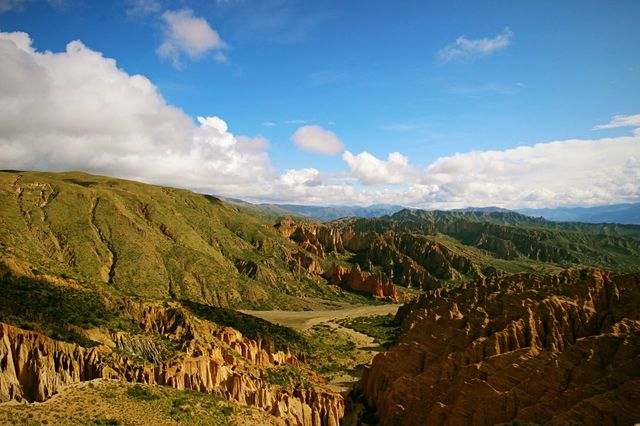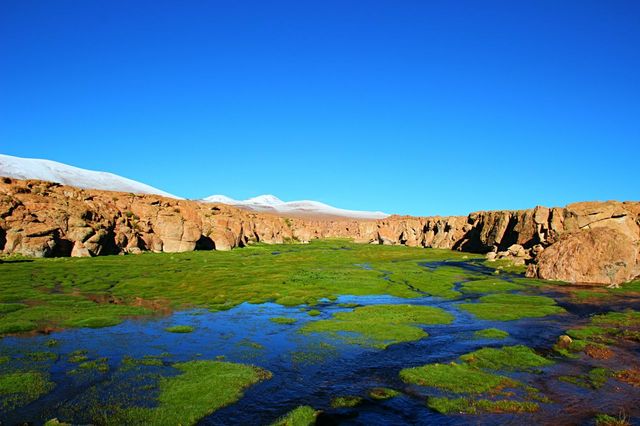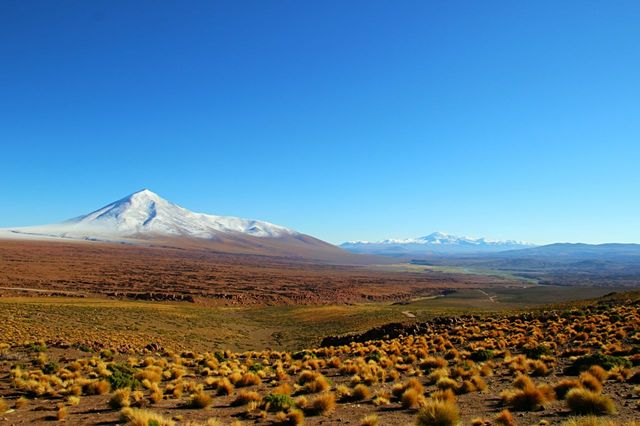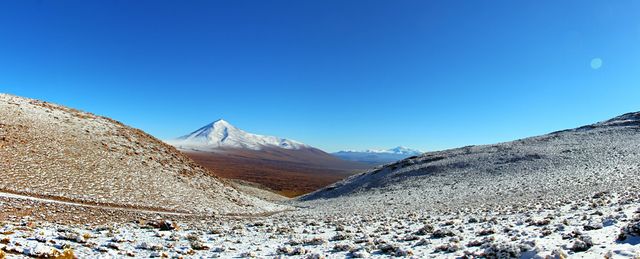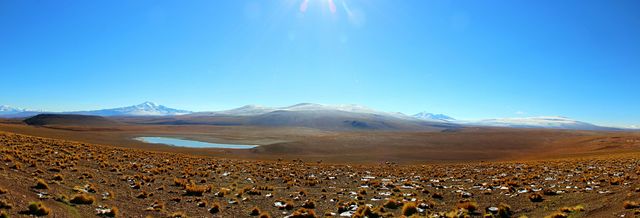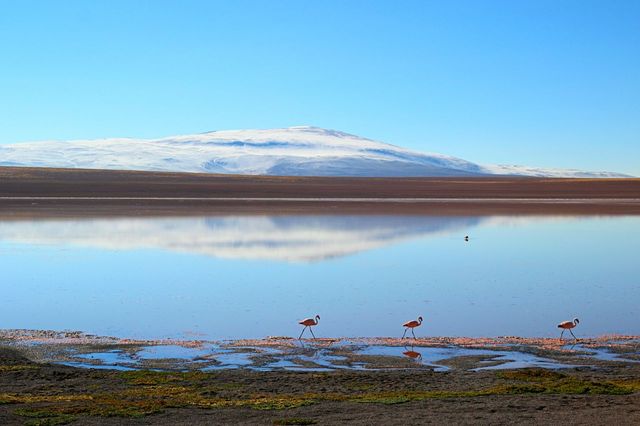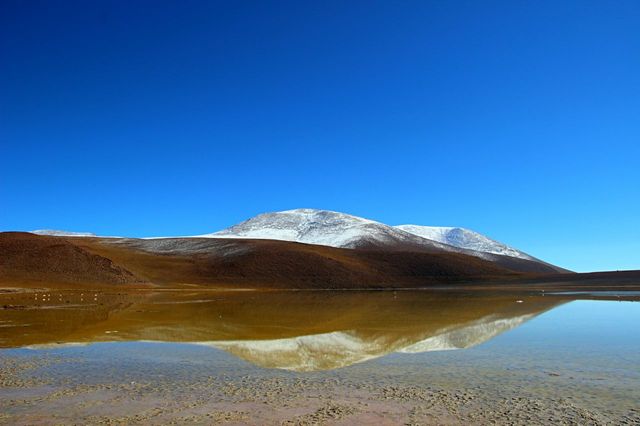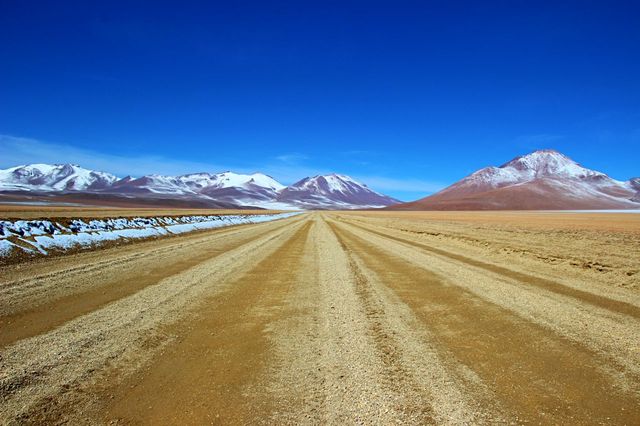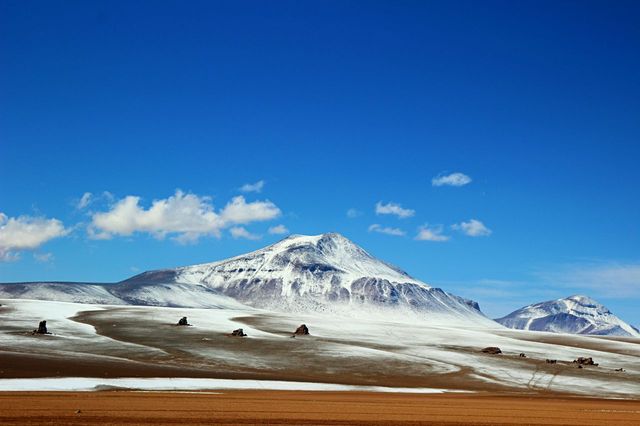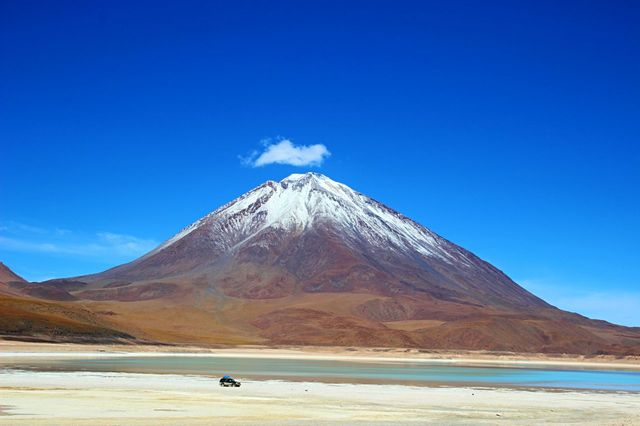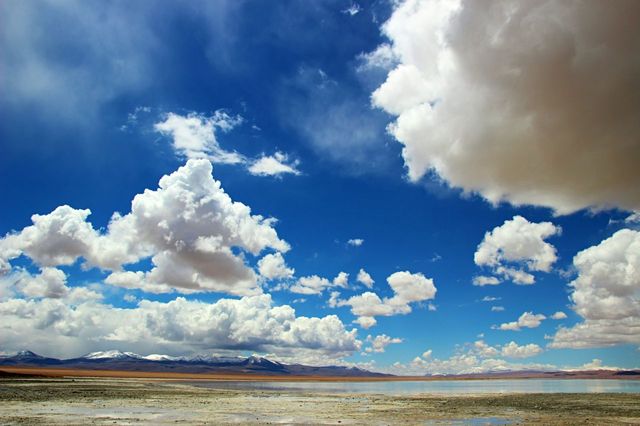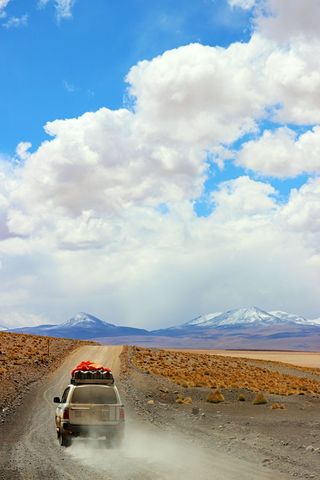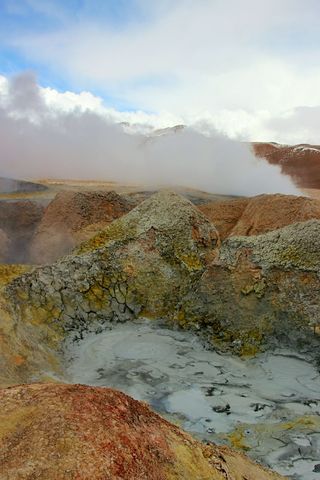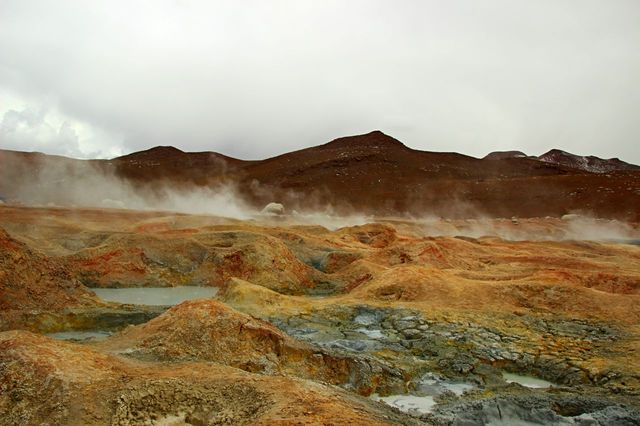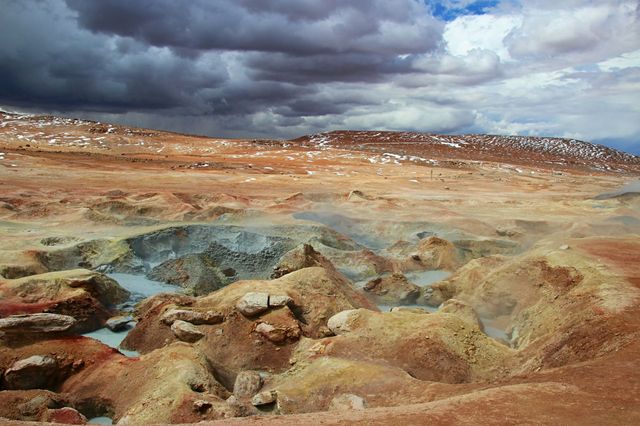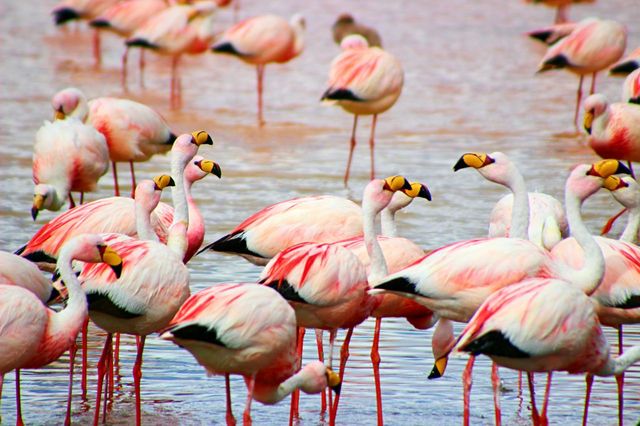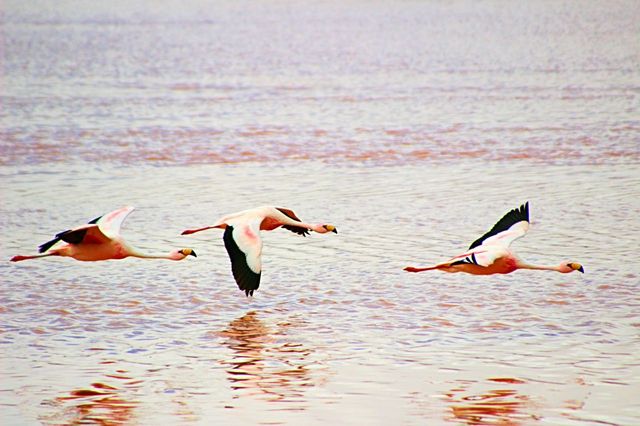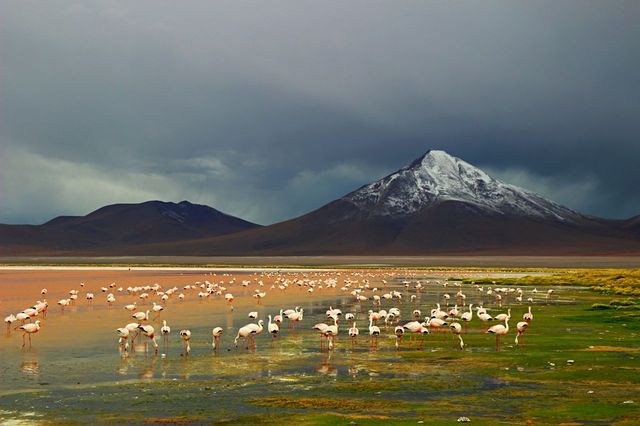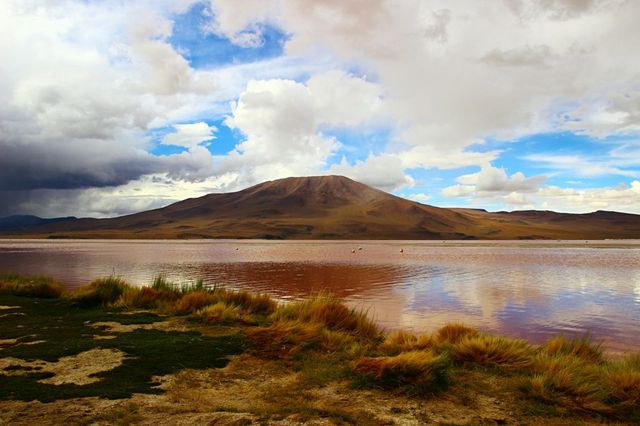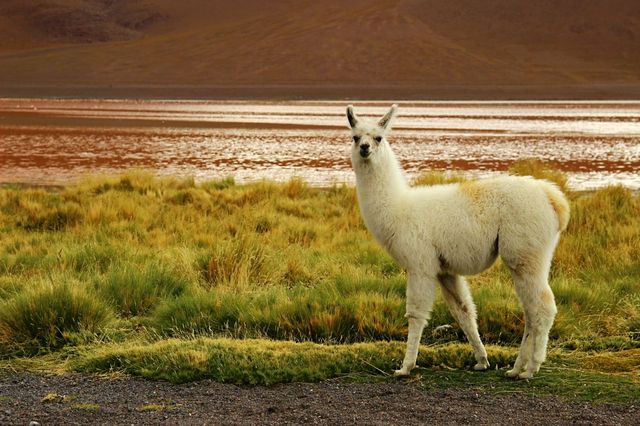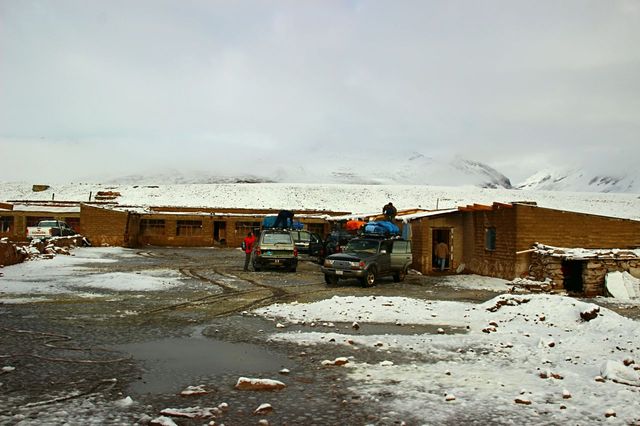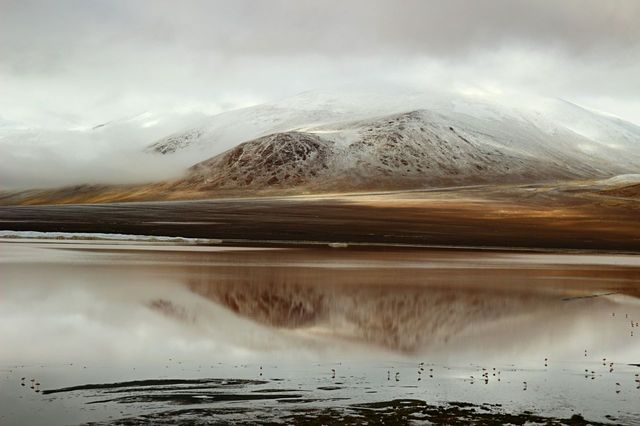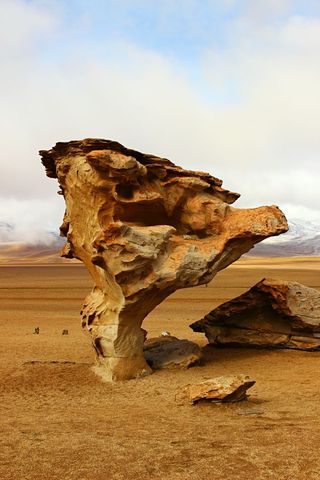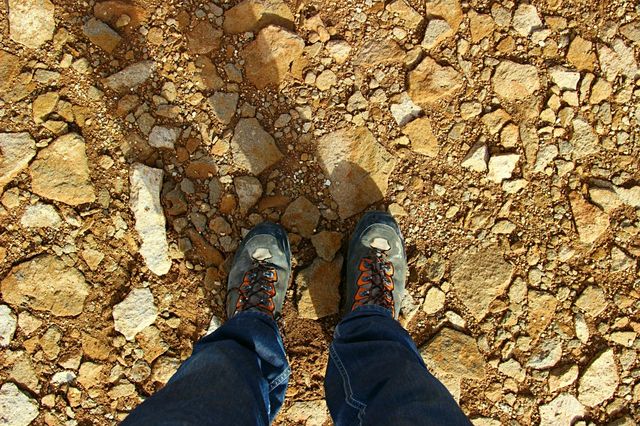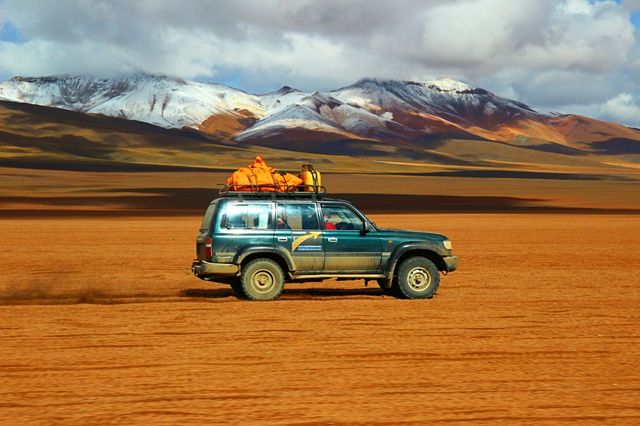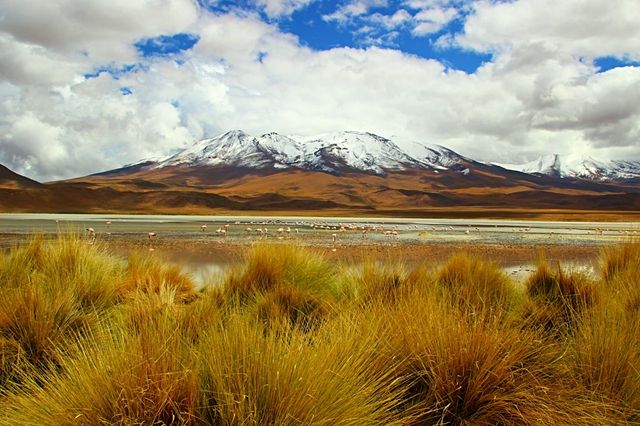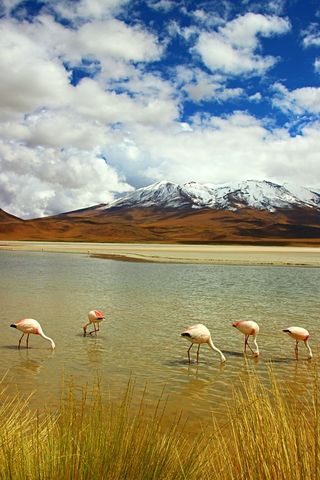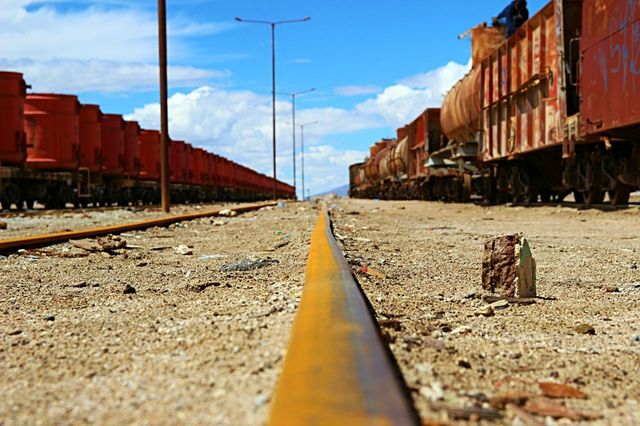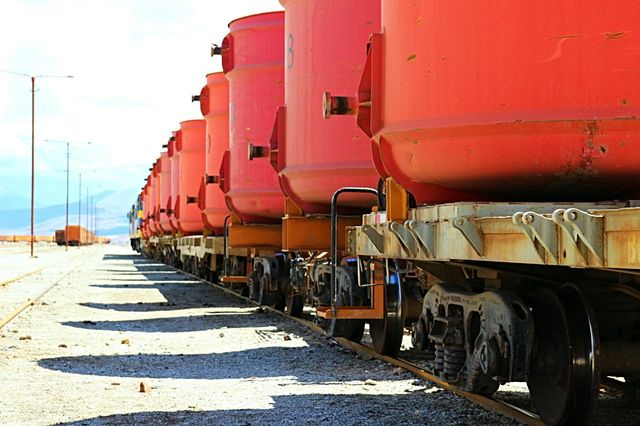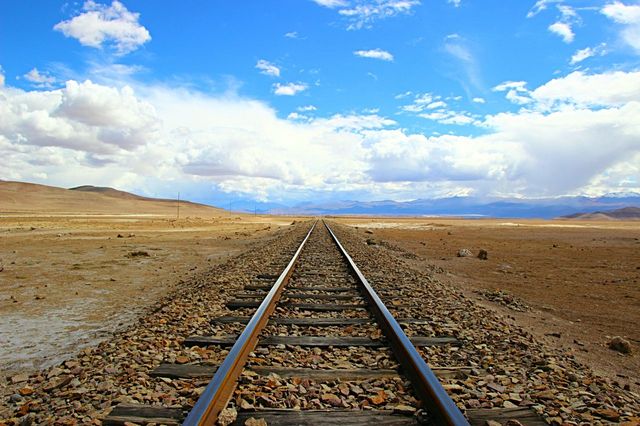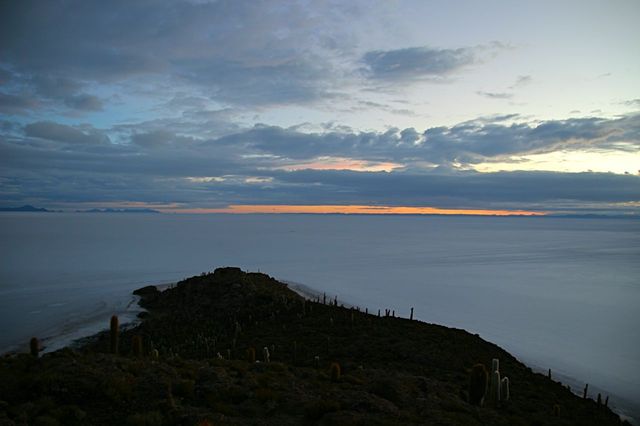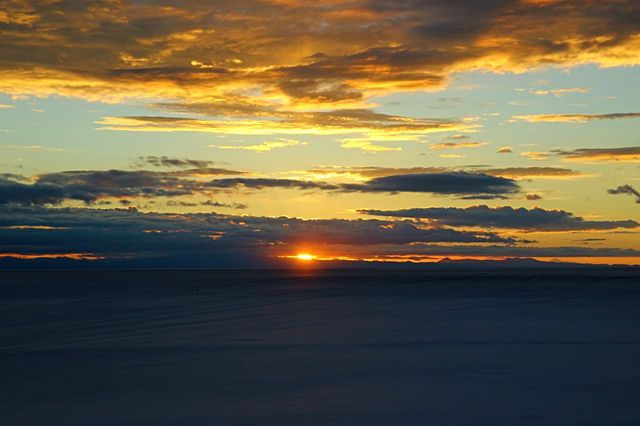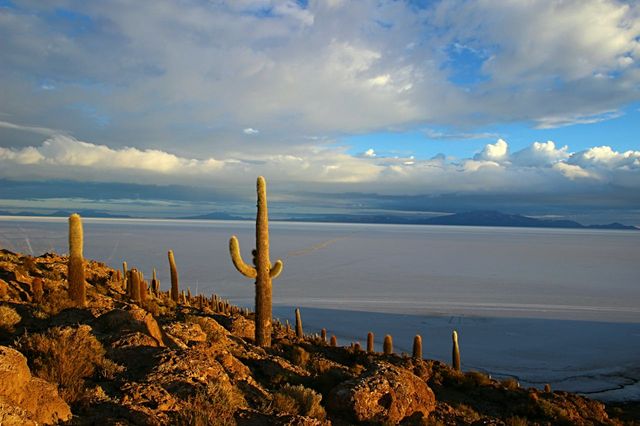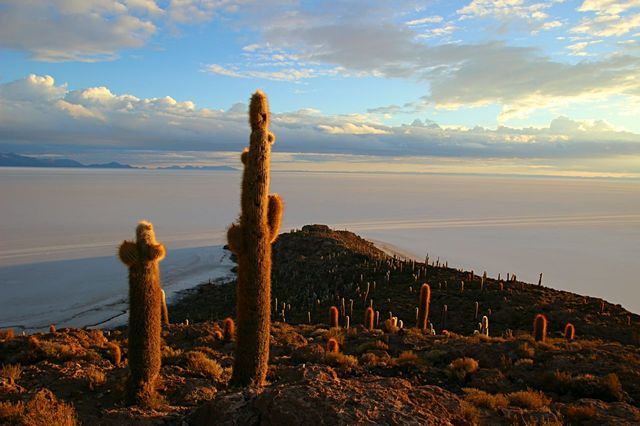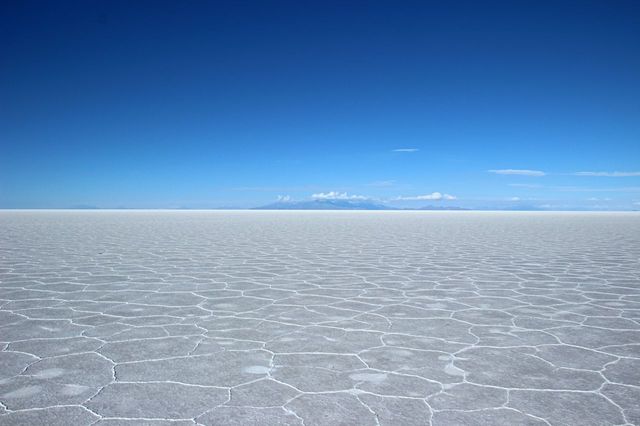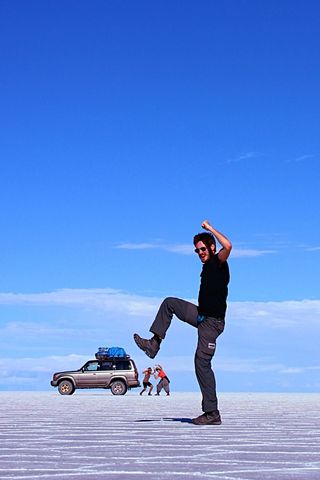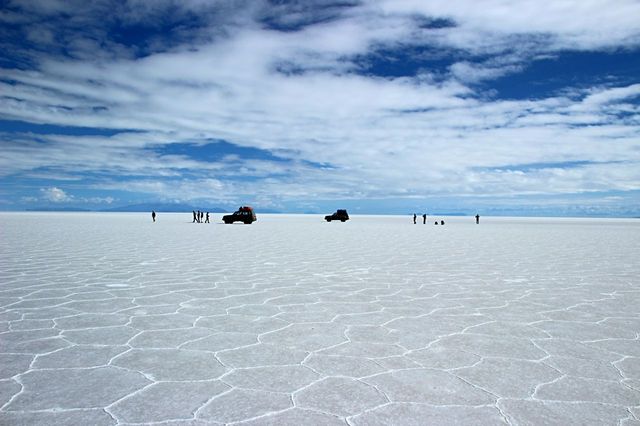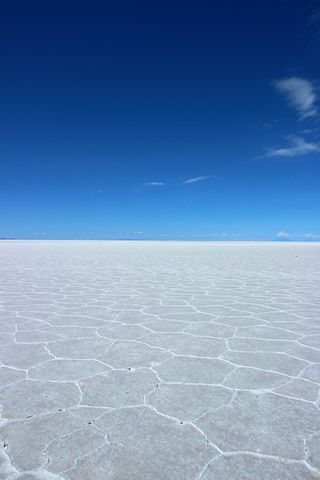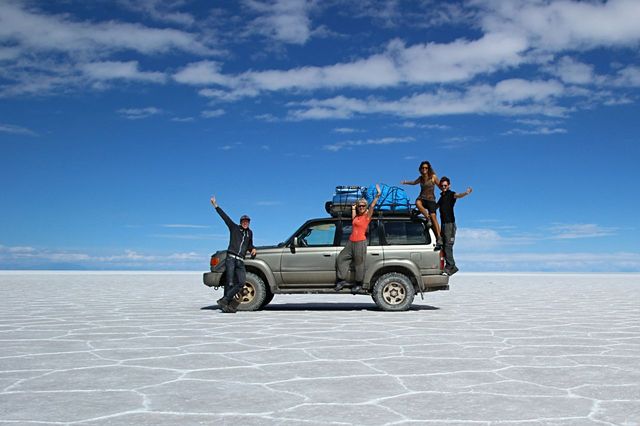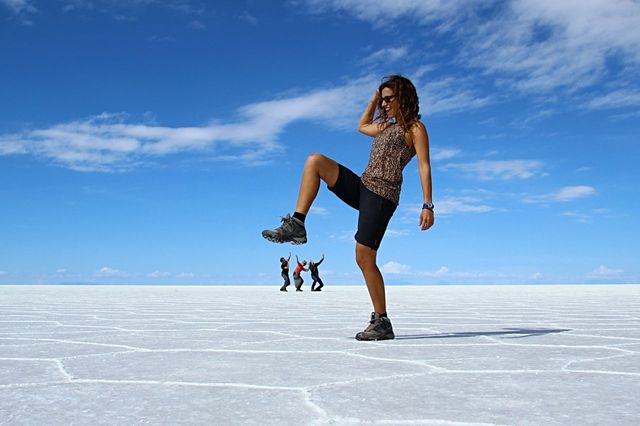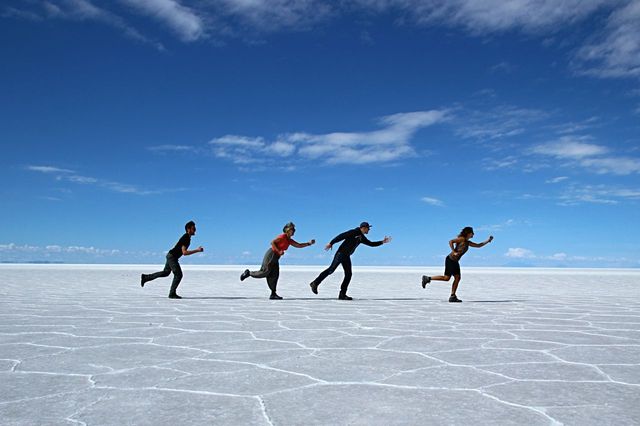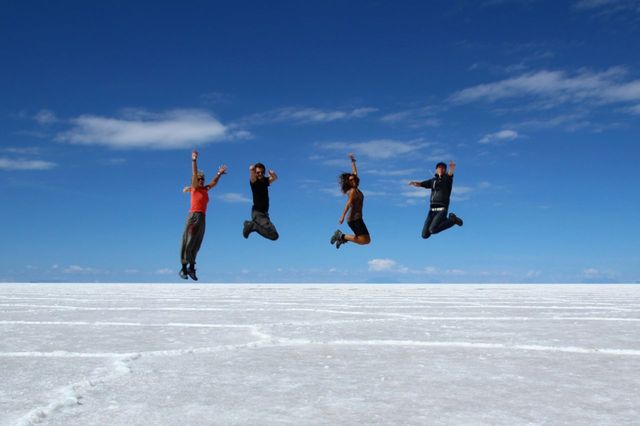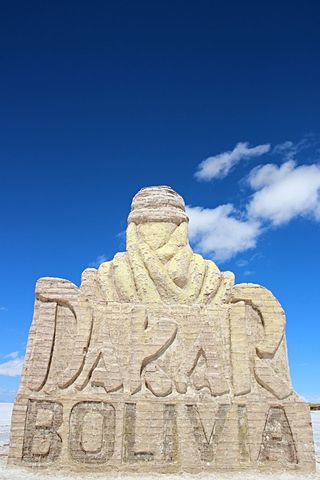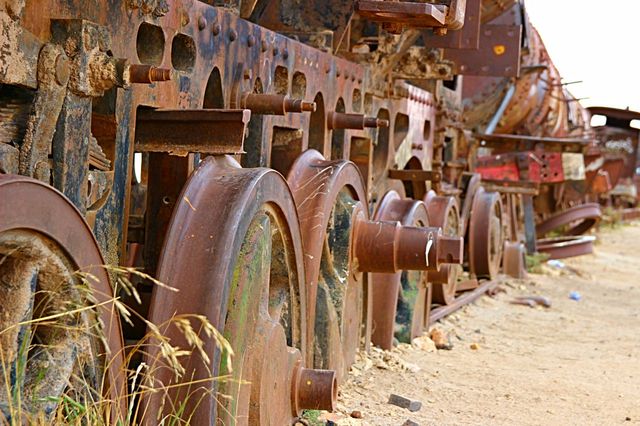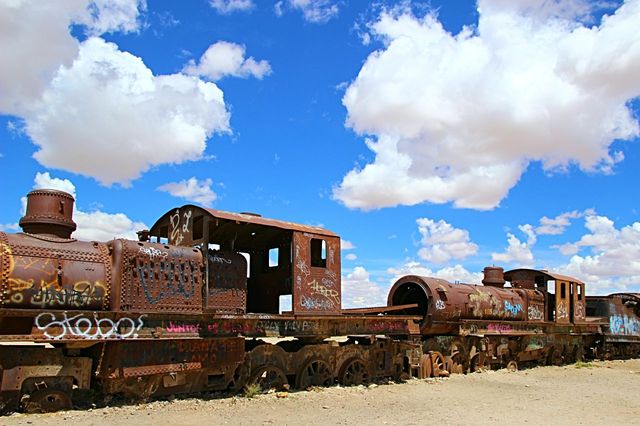Bolivian Altiplano Tour
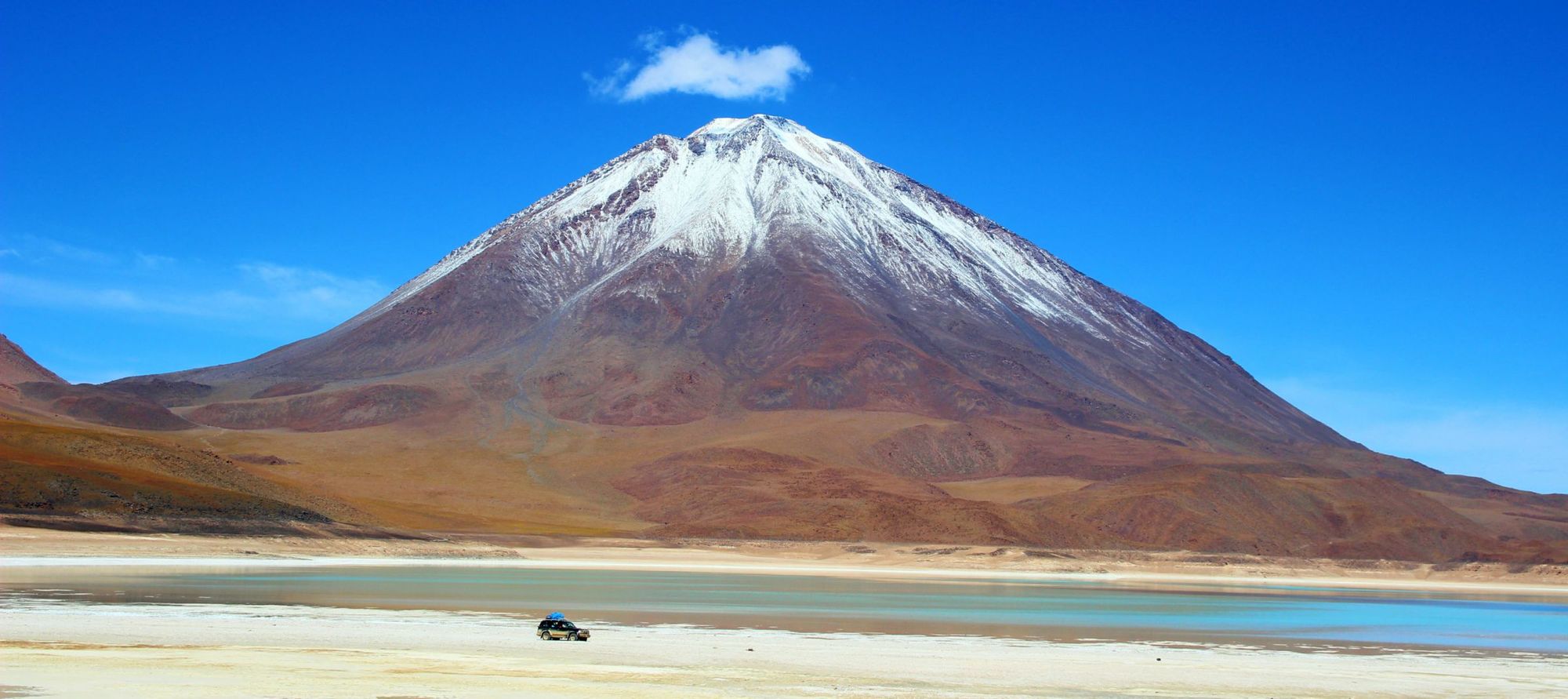
Welcome to the Bolivian Altiplano! This means on the one side: an average elevation of 4.000 meters, cold temperatures in the night (because of the high altitude), no heating, no warm water, limited electricity, limited cellphone coverage, no Internet, no paved roads, no street signs, no shops and probably a headache, nausea and other high altitude related health problems. But on the other side it means: stunning landscapes, wild animals, amazing weather, friendly people, and again, and I can't stress that enough: really breathtaking landscapes.
A typical tour which you can book anywhere in Tupiza or Uyuni (I went from Tupiza and decided to do a four day trip which ends in Uyuni) looks like this: You're forced with five other people (a driver, a cook and four tourists) in a 4x4 Jeep (in my case it was a not so new Toyota Land Cruiser). The driver is on first hand notice a lunatic which goes way too fast on streets which should be driven with half of the speed (but it turns out everything is OK and you can even go faster). You sleep in rural accommodations without any heating or warm water and though you hide in your sleeping bag and are covered by three blankets you still freeze in your PJs. You learn to love your cook because he/she (in my case she) provides the culinary highlights of the day (and otherwise you would have to hunt Llamas, Alpacas or Vicunas). You get to look at some of the highest active volcanoes in the world. You experience flamingos at remote lagunas. And by remote I mean remote! Aforementioned Llamas, Alpacas and Vicunas become your daily comrades. You cross rivers so natural and wild that you will hold your breath (also because the actual crossing is a real adventure). Bizarre rock formations make you shoot hundreds of photos. Beautiful mountains glow in colors you've never seen. You see snow covered peaks and glittery landscapes like you would expect them to encounter on the Moon or the Mars (I've not been there yet, but I picture it this way in my head). And a surrealistic and huge salt lake will make you hold your breath when you don't expect it to become any better. To summarize it: You get to experience some of the best and raw material of what Mother Nature has to offer.
Here is the tour I did in detail:
- Day I: The tour was kicked off in Tupiza. The first few kilometers were dominated by Las Quebradas de Palala y El Sillar (Spanish for Canyon Palala and El Sillar), which feature some impressive rock formations. Next stop was the Collpa Laguna (or Laguna Kollpa). Along the road the volcano Uturunku was visible, with 6.008 meters the highest peak in southwestern Bolivia. The night was spend in a village in somehow close proximity to the Lagunas Verde & Blanca.
- Day II: The second day started with lots of driving, first we had to cross a salt lake and subsequently the Desierto de Dalí (called Dalí Desert because the landscapes resembles paintings by Dalí). The first proper stop were the Lagunas Verde & Blanca (green and white lakes) at around 4.300 meters above sea level. The volcano Licancabur, 5.950 meters, towering over both of them. Sol de Mañana (Morning Sun), a geothermic field at an elevation of 5.000 meters was our next sight. In the afternoon we arrived at the Laguna Colorada at 4.278 meters. A village at the lake was our accommodation for the second night.
- Day III: The day began with another stop at the Laguna Colorada in order to soak in the different colors of the lake in the afternoon and morning. The route continued to the Arbol de Piedra (Tree of stone), a famous rock formation which resembles a tree. Subsequently we visited the Lagunas Ramaditas, Honda, Charcota, Hedionda and Canapa, all at an approximate elevation of 4.000 meters. A view of the volcano Ollague (5.865 meters) accompanied the drive along the lagunas. A Salt Hotel close to the Salar de Uyuni was our lodging option for the third night.
- Day IV: The highlight of the four day trip was spared for the last day. Getting up at 4 am in the morning was necessary in order to watch the sunrise over the Salar de Uyuni from the Isla del Inkawasi (an "island" in the midst of this gigantic salt flat). After that we were able to shot a lot of photos of this surreal location and the salt lake itself. The tour continued with a visit of the original Hotel del Sal at the edge of the salt lake and a stop at the Cementerio de Trenes (Train Cemetery). Uyuni was then the final destination of the tour.
